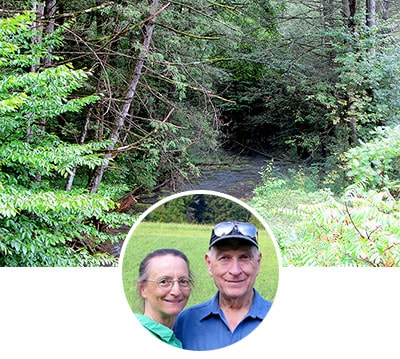
Nowadays, there’s nothing like getting away from your devices and breathing in the fresh air that nature provides. Yet, no matter where you are in the country, one type of place stands tall above the rest as the ideal place to connect with the outside world: state parks. Pennsylvanians, in particular, have a gorgeous array of state parks to choose from!
On top of their natural splendor, one of the best things about Pennsylvania state parks is that they’re completely free to get into. Extra services like campgrounds and cabin rentals do have a price tag attached, but you can enter and explore all of the state’s parks without spending a penny.
Free admission to Pennsylvania state parks is an incredible benefit, but we’re just getting started. Those serious about maximizing their state park experience will want to read on to discover how many parks there are for them to enjoy, who’s in charge of them, and more.
Pennsylvania State Parks are Free of Charge
One of the many advantages of residing in Pennsylvania is the number of breathtaking state parks there are, and it only gets better when you realize that it costs nothing to access any of them. You read that right – anyone is free to walk or drive right into a Pennsylvania state park with no cost involved! These fantastic public facilities have been serving Pennsylvanian citizens for over a century and are routinely maintained to ensure their longevity.
While there are plenty of activities to enjoy that do cost money at these state parks (which we’ll get into later), you can have a fully packed day without spending anything. Pennsylvania’s parks have a massive amount of trails for you to hike, bike, and picnic on. In total, there are more than 12,000 miles of beautiful state park land for you to explore, so you can realistically occupy your time seeing sights for ages. Pennsylvania also has nearly one hundred “rail trails,” which are old railroads that have been cleaned up for the public to use like they would any other hiking trail.

Fishing and boating are two other popular activities people enjoy for free (or really cheap) at Pennsylvania state parks. Lucrative fishing holes abound in these parks, and not only can you fish for free in them (as long as you have a proper fishing license). You can even borrow fishing tackle for free while you’re there if you don’t have the appropriate equipment yourself!
Boat owners can enjoy the wonderful Pennsylvanian waters at several premiere boating spots, and boats are also available for the public to rent in certain locations. Unlike fishing tackle, however, the boat rentals aren’t free, and there are a couple of minor startup costs you have to pay for boating.
Given the accessibility of Pennsylvania state parks, it’s only natural that parking would be free at these sites as well. There’s so much to enjoy here that doesn’t have a price tag, but if you’re willing to spend a little, there are tons of additional activities that can boost your experience.
Swimming is extremely popular and is offered for a small fee at many parks, with prices ranging from $3 to $15 for residents and $3 to $20 for non-residents, varying by park. Senior citizens and late arrivals will enjoy a steep discount on these rates.
Another renowned, if slightly pricey, state park activity is camping. Whether you’re alone or in a group, camping out in a PA state park is an excellent way to connect with nature and discover the beauty of the world around you. However, as one of the most sought-after amenities in the Pennsylvania State Park System, campsites aren’t as cheap as other offerings.

The weekday rental price for a night in a campsite is $16 for a Pennsylvanian resident and $21 for a non-resident. This price is only scratching the surface, though, because you’ll see additional fees start to add up depending on the specific experience you’d like for your stay.
For example, staying on a weekend or holiday will add a few dollars, as will springing for a site with a shower or an Adirondack shelter. Basic campsite amenities all add a noteworthy fee too, like water, electricity, sewer, and the ability to bring pets or an extra vehicle.
Thankfully, the Pennsylvania State Park System has a major interest in keeping its parks as affordable as possible, so with careful planning, you can make sure your camping trip doesn’t break the bank. In addition, seniors and people with disabilities receive a nice nightly discount, and anyone staying for a whole week will get a few dollars knocked off their total bill.
The Pennsylvania Department of Conservation & Natural Resources clearly lays out all of the fees you might encounter (including a $6.50 charge for all online transactions) while making a reservation for a campsite, so you can calculate a solid estimate of your expenses before committing to anything. Even if you decide not to shell out for a campsite, you’re sure to have a good time enjoying the accessibility of Pennsylvania’s state parks.
Keystone Answers Fun Fact: Cherry Springs State Park, located in Potter County, is one of the best places for stargazing on the east coast. The park is on the list of Certified IDA International Dark Sky Parks.
How Much Land is in the Pennsylvania State Park System?
At 300,000 acres of land across 121 total state parks, the Pennsylvania State Park System is made up of a wealth of natural beauty for the public to enjoy. These parks are located sporadically around the state’s 67 counties, so no matter where you are in Pennsylvania, you’re likely to find a great park to explore.
The most visited park is far and away, Presque Isle State Park, which is located right next to Lake Erie, making it the site of the only seashore in the entire state. Rounding out the list of the top 5 most visited Pennsylvania state parks are Pymatuning, Prince Gallitzin, Point State, and Codorus State Park.

Who is in Charge of Pennsylvania State Parks?
Such a large amount of public land can’t be run by just anybody. It takes a massive team of dedicated individuals to maintain the upkeep of so many state parks, and that’s where the Pennsylvania Department of Conservation & Natural Resources (DCNR) steps in. This branch of the Pennsylvanian government has taken care of the parks since the establishment of Pennsylvania’s first state park in 1893.
The awe-inspiring landscapes of Pennsylvania state parks weren’t always as we know them today. However, a combination of governmental intervention and advocacy from the public led to the recovery of Pennsylvania’s land after it faced the risk of becoming a “Pennsylvania Desert” due to the practice of cutting the forests.
You see, a couple of hundred years ago, Pennsylvania was known for its lush foliage and greenery, but rapid industrialization quickly threatened the survival of the state’s forests. As a result, it was said that the forest was being replaced by the “Pennsylvania Desert,” and the DCNR has worked since then to reverse this trend.
How Are Pennsylvania State Parks Funded?
It’s taken some heavy lifting over the last century to get Pennsylvania’s State Park System off the ground, as well as to maintain its level of cleanliness and functionality. Today, the DCNR relies on the Land and Water Conservation Fund set up by Congress in 1964 for much of its funding. Designed to help preserve and maintain public lands across the US, the fund takes a certain amount of offshore drilling fees and funnels it into Pennsylvania’s natural landscapes. Since 1964, Pennsylvania’s parks have received over $178 million from the fund’s State Assistance Program, forming a considerable portion of the park system’s current funding.

The Pennsylvania State Park System couldn’t always rely on federal funding, though. Governor Robert E. Pattison attempted to get money from the federal government for state parks but was denied, instead opting to enact a policy squaring away a certain amount of land for a public park. This land wound up becoming Pennsylvania’s first state park, Valley Forge Park, and more parks slowly trickled in over the years as land and money were donated by various benefactors.
Note: Today, Valley Forge is under the umbrella of the National Park Service. On July 4th, 1976, it officially became Valley Forge National Historical Park.
Currently, federal funds are the top resource the DCNR has for its parks, and the deal just got sweeter in the last two years. The Land and Water Conservation Fund that’s done so much for the parks is actually meant to receive close to a billion dollars every year but has hardly ever really gained that much.
Congress addressed this discrepancy in July of 2020, passing legislation that will see the fund filled to its highest capacity every year. That means a significant boost in funding for Pennsylvania state parks, so keep an eye out for new developments in the future.
Want Free Fun? Visit a Pennsylvania State Park
Pennsylvania’s abundance of radiant state parks offers free entrance and a variety of amenities, both free and for a small cost. So no matter your budget, schedule a visit to one of these natural wonderlands and feel complete relaxation. Both citizens and government officials have put massive amounts of work and dedication into keeping these parks clean so that you can enjoy them.






